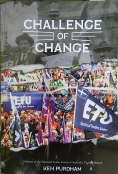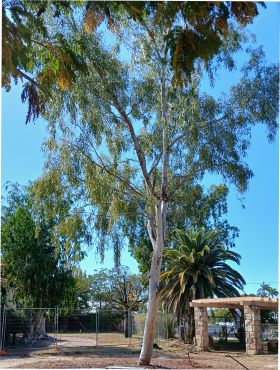Ken Purdham
Bachelor of Arts History & Politics
Diploma of Professional Writing & Editing



In my view, unionism is a belief. It’s the standing together in collective strength for the good of everyone because the voice of many is more likely to be listened to than the voice of the individual. Unions are no more than people standing together in an organised way. As organisations they provide an educated element to a cause, a technical resource and an order of working people. As such unions put forward compelling arguments that the individual may not otherwise be able to. But it’s the standing together of the many that gives strength to the voice of the people. Without that strength, the voice more often than not, is ignored.

Click picture to march back to the top of the page


ETU Historian
Click to ETU website
I’m in Barcaldine, looking to sit under the shade of three trees in this Queensland outback town. To me, as someone who loves labour history, these trees are iconic monuments of working people’s struggle and victory over oppression. It’s where so much began, alongside the railway station, under a Ghost gum, known as the Tree of Knowledge.
As tree huggers go, anyone who believes in working peoples’ rights should be hugging this tree, as I am now, before taking my journey back in time. Prime Ministers and Premiers have hugged it, union leaders have hugged it and ordinary working people have hugged it.
Ah, but the tree is dead. Being such an iconic symbol of the fight against oppression,
it’s completely understandable why the low-
It’s my thing to let my mind drift through journeys into the past. I leant against the cottage door where the Tolpuddle Martyrs met and I went back to their time when they formed themselves into a union and were sent to Australia as convicts because of it. I leant against the wall at Melbourne University that the masons were building when they downed trowels and marched for the eight hour day and I took their journey too. Now, as I hug the Tree of Knowledge, my journey is to drift back to where the shearers gathered to formalise the manifesto that lead to the formation of the Labor Party.
I’m thinking back to 1892; the shearers were fighting for their wages and conditions; their bosses had the Government in their corner. There was no salary for members of Parliament, it was only the wealthy landowners and business types who could afford to sit in the chamber and legislate, usually in their favour; the masters and servants thinking.
The Tree of Knowledge shaded the shearers as they formalised the need for political representation by way of a political party. You could say it was revolutionary. Never before had there been an organised political collective to represent anyone, let alone working people.
Today, the tree stands like a ghost opposite the railway station, where it stood for more than 200 years, until poisoned by that low life and is now preserved as a frozen monument.
But that manifesto the tree presided over, the first Mayday marches of the shearers, and the first labour movement they created didn’t just materialise under its branches. Those achievements came from ideas formed elsewhere, during the shearers struggles against the oppression. I need to move on.
Three kilometres out of town, in the area that was the shearers camp, there’s a Coolabah tree. The shearers sat under is and now, a century later, here I am under that same tree, soaking up the poignancy of the moment. In my mind I can hear the shearers throwing around their thoughts and, maybe, shaping their ideas into what would become the manifesto they would formalise under the Tree of Knowledge.
The area is scrub with a dry creek bed that I’ve already walked along just as the
shearers would have done, and as I look about me I try to imagine how it would have
been. There were close to thirteen-
I know the shearers gathered under the shade of this Coolabah Tree because they carved the words, ‘United we stand, divided we fall’ into its trunk. The words have worn away but the tree still lives on, unprotected and in defiance, as a hidden symbol of the ongoing struggle that has never waned since those times. I can’t help myself and run my hand over the place where the words were, aware that the words are as important today as they were back then.
I can almost feel myself among the shearers, as I stand under this still living tree,
listening to ideas being thought of, argued about and developed before being formalised.
My head is full of the suffering of the fight for working people’s rights. But it’s
time to move on. So one more walk along the dry creek bed, then back to Barcaldine,
and onto my third tree. It’s the ‘Young-
The ‘Young-
What better place to end my journey than to sit in the grounds of the Australian
Workers Heritage Centre under the shade of the ‘You-

Read More
Under The Shade of a Barcaldine Tree


I recently took a trip to Barcaldine to visit the Australian Workers Heritage Centre, and the outback town that has such a significant place in labour history. The Centre and indeed the people of this small outback town could not have been more welcoming.
Wandering around the Centre and sitting by the little lake set me off on historical journeys and I was in my element.
The Australian Heritage Centre was all I hoped it would be. However, I could not have known that taking that journey to Barcaldine and the Centre would turn me into a tree hugger.


The Coolabah Tree
The ‘Young-
The Tree of Knowledge
Click on the picture to visit the centre
